Support
NEED HELP? WE ARE HERE TO SUPPORT YOUR MISSION!
Read articles, FAQ’s and troubleshooting guides to learn more about your product, and in the unlikely event of a fault, set up a repair through our dedicated support page. Select your product below.
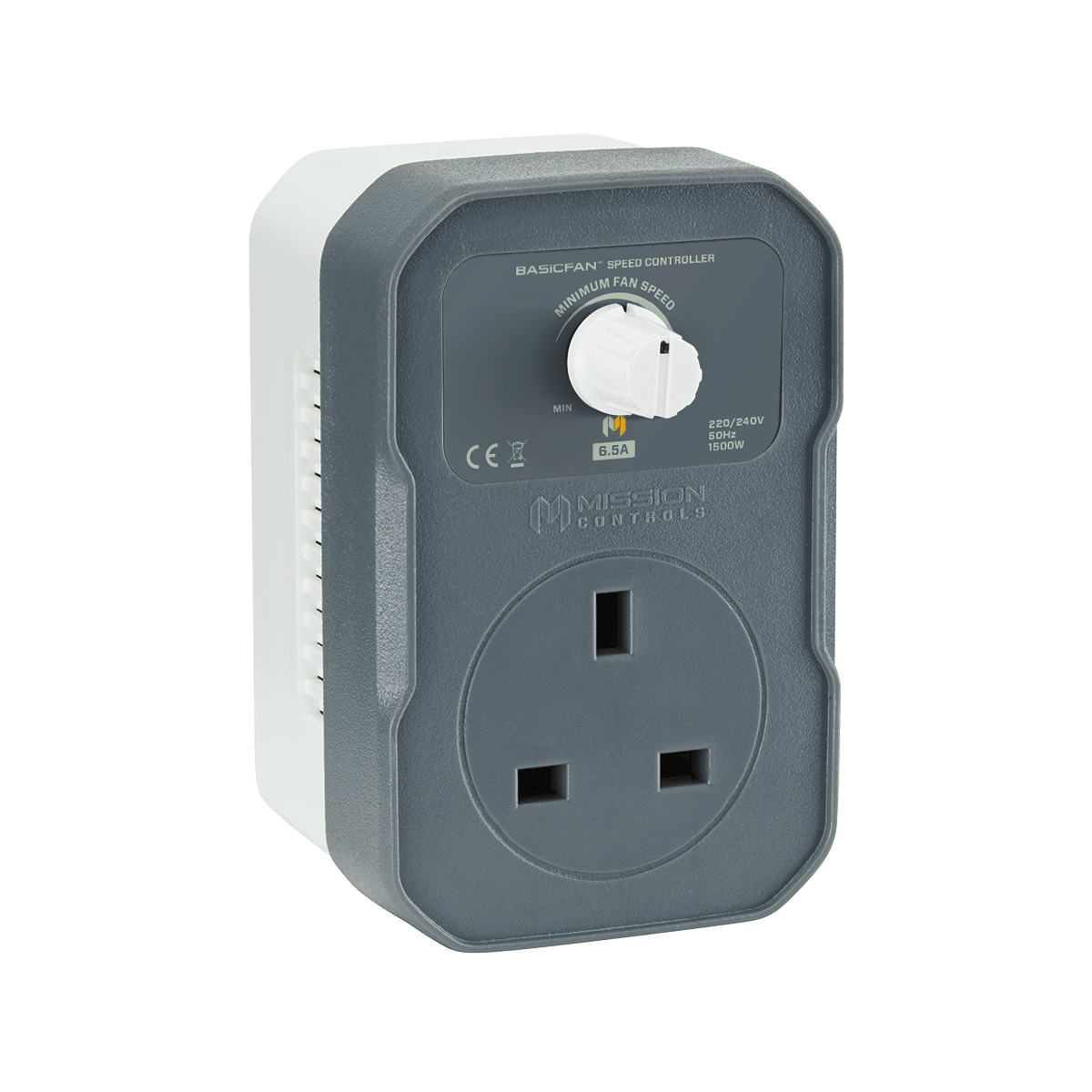
Speed Controller
This is an effect of the relationship between the type of fan you are using and the technique of control. Even though we use high quality filtering systems to limit interference, different fans will react differently, even when used on the same controller. To limit the noise from your fan, try increasing the Minimum Fan Speed to over 20%. If silent operation is essential, consider using a controller with our No-Humm feature.
Assuming incoming air temperature is lower than the temperature inside the room, it means your fan is too small for the amount of heat being generated by your lighting system, or it is being restricted by duct work. Try temporarily disconnecting the filter and/or reducing duct length and bends. If this solves the problem, consider using less light or larger fans before reinstating duct work. Check our support blogs for help with choosing the right size fans.
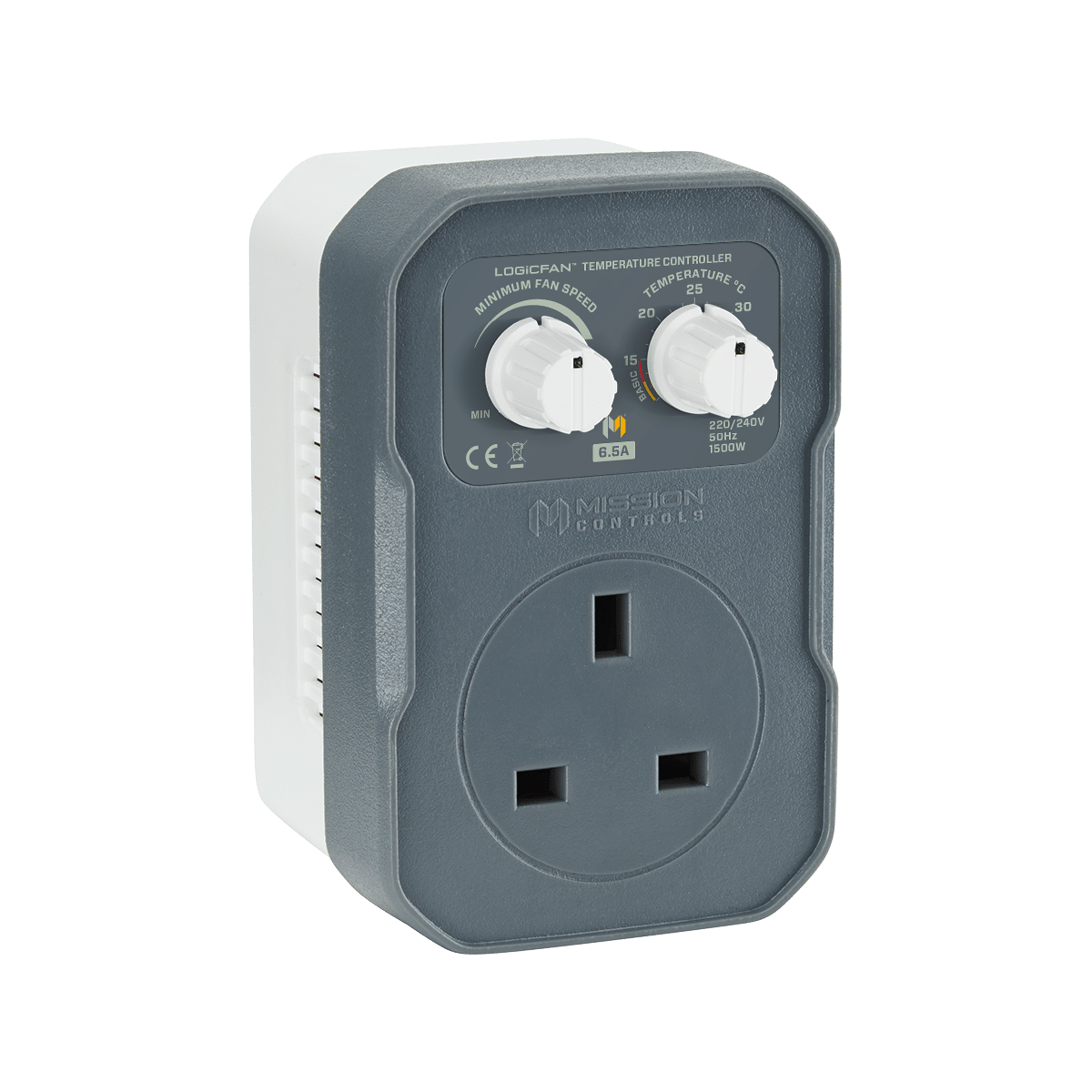
Temperature Controller
This is an effect of the relationship between the type of fan you are using and the technique of control. Even though we use high quality filtering systems to limit interference, different fans will react differently, even when used on the same controller. To limit the noise from your fan, try increasing the Minimum Fan Speed to over 20%. If silent operation is essential, consider using a controller with our No-Humm feature.
When you first install your controller, it needs to calibrate itself to find the correct fan speed. During this calibration sequence, fans speed will go up and down. Calibration will last approximately 5 minutes before the fans find the correct speed. Calibration will not happen again unless controller is powered off and restarted.
Assuming incoming air temperature is lower than the temperature inside the room, it means your fan is too small for the amount of heat being generated by your lighting system, or it is being restricted by duct work. Try temporarily disconnecting the filter and/or reducing duct length and bends. If this solves the problem, consider using less light or larger fans before reinstating duct work. Check our support blogs for help with choosing the right size fans.
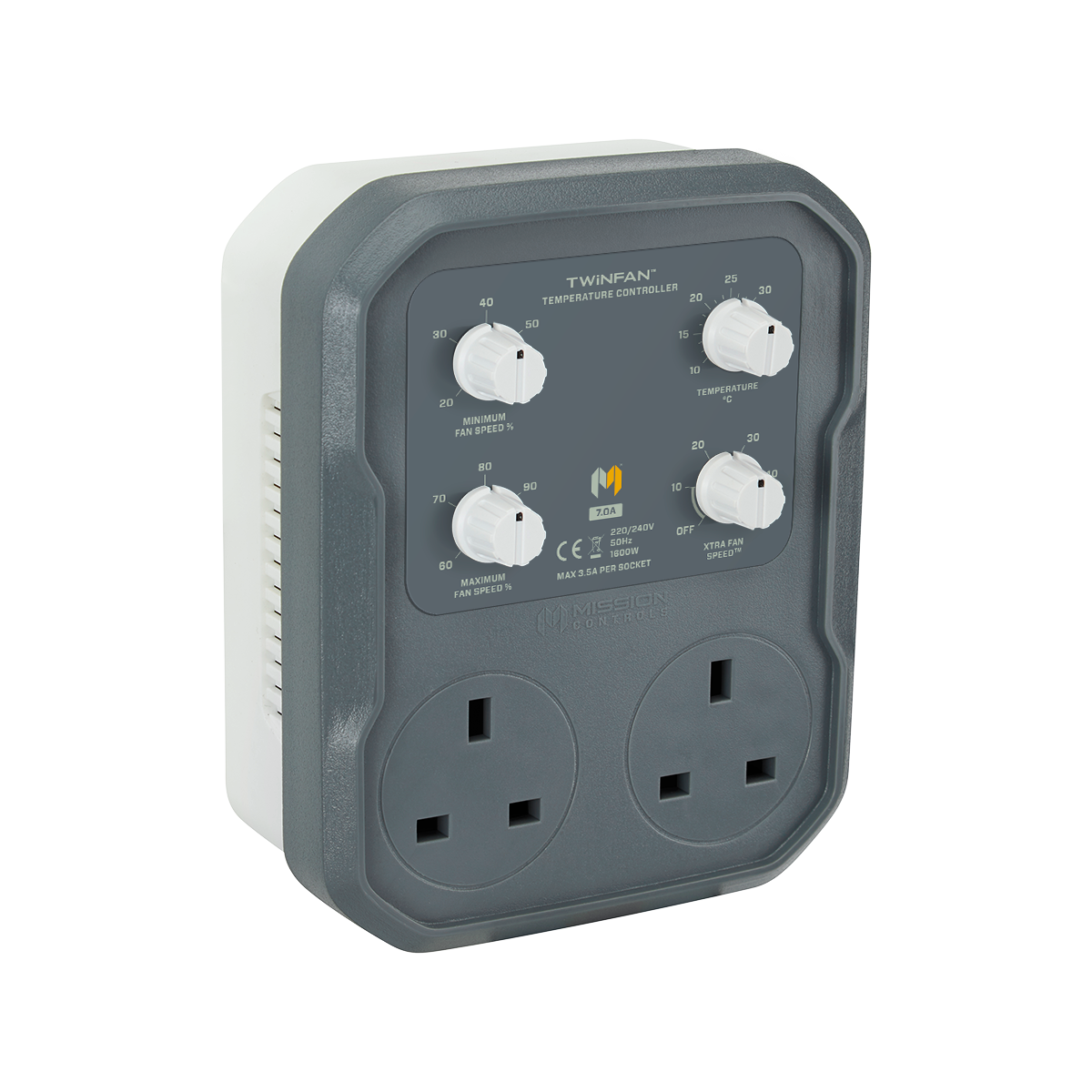
Temperature Controller
Assuming your filter is new, and of good quality, this is most likely because more air is being drawn into the room than is being extracted causing positive air pressure that is forcing air out of gaps in the room. Check Minimum and Maximum Fan Speed settings are correct, we recommend the lowest minimum and highest maximum, or check our support blogs for help with extractors and achieving negative air pressure.
The load per socket cannot exceed more than 50% of the total rated amps of the controller. For example, TwinFan™ Temperature Controller 7 Amp cannot exceed more than 3.5 amps per socket.
This is an effect of the relationship between the type of fan you are using and the technique of control. Even though we use high quality filtering systems to limit interference, different fans will react differently, even when used on the same controller. To limit the noise from your fan, try increasing the Minimum Fan Speed to over 20%. If silent operation is essential, consider using a controller with our No-Humm feature.
When you first install your controller, it needs to calibrate itself to find the correct fan speed. During this calibration sequence, you will hear the fans speed changing up and down. Calibration will last approximately 5 minutes before the fans find the correct speed. Calibration will not happen again unless controller is powered off and restarted.
Assuming incoming air temperature is lower than the temperature inside the room, it means your fans are too small for the amount of heat being generated by your lighting system, or they are being restricted by duct work. Try temporarily disconnecting the filter and/or reducing duct length and bends. If this solves the problem, consider using less light or larger fans before reinstating duct work. Check our support blogs for help with choosing the right size fans.
This means the Night-Pulse™ feature is activated. To deactivate, turn controller off at mains, cover the Night-Pulse™ Sensor with cap then switch controller back on.
We do not recommend disconnecting the intake fan. If disconnected, airflow will be compromised and room will lose negative pressure. A better strategy is to:
1. Check that the Minimum Fan Speed is set to its lowest setting.
2. Defuse incoming air using Cool-Sox, or similar product.
3. Use a dedicated heater with thermostat during the night time.
4. Draw incoming air into room from a warmer location, rather than outdoors.
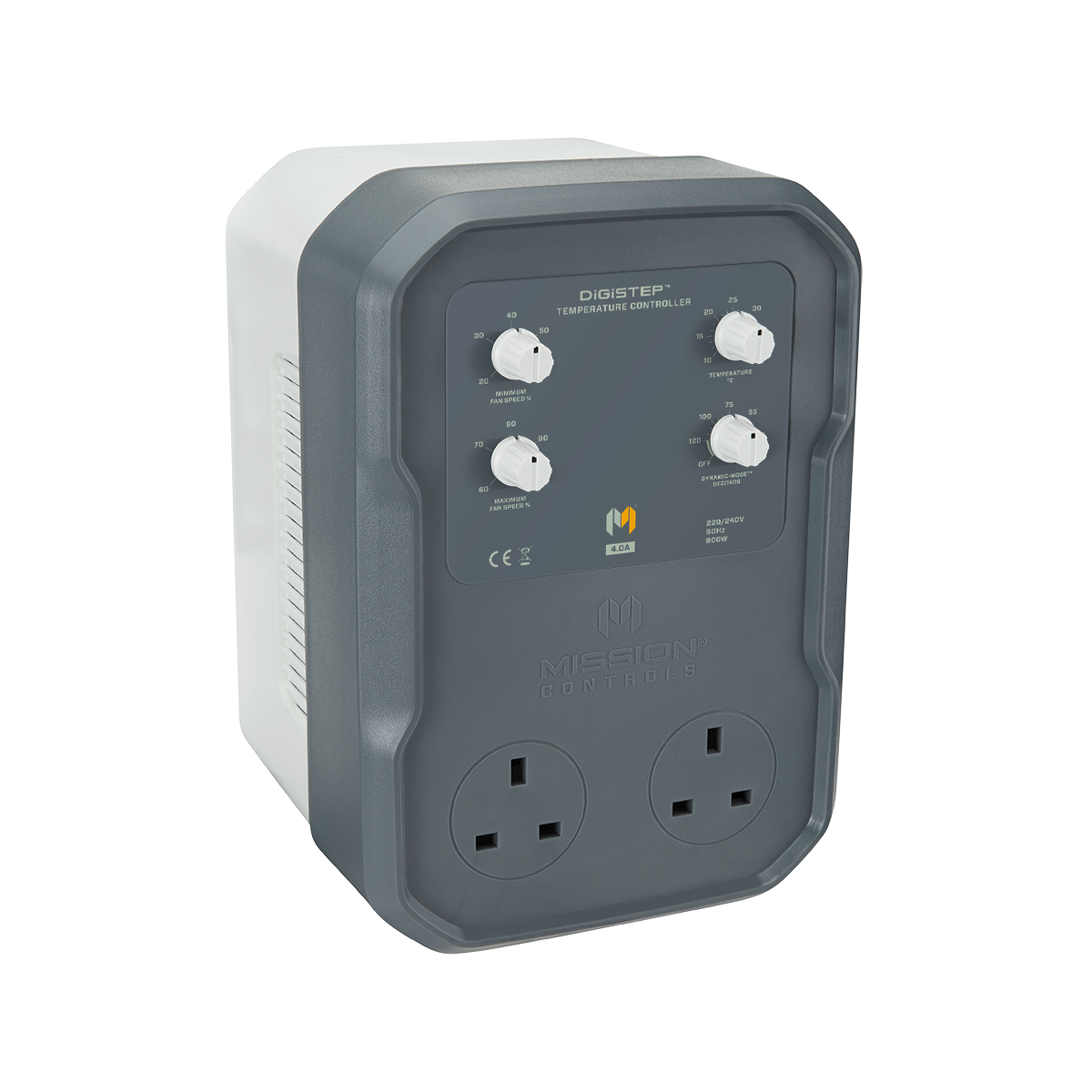
Temperature Controller
Assuming your filter is new, and of good quality, this is most likely because more air is being drawn into the room than is being extracted causing positive air pressure that is forcing air out of gaps in the room. Check Minimum and Maximum Fan Speed settings are correct, we recommend the lowest minimum and highest maximum, or check our support blogs for help with fans and achieving negative air pressure.
No, as long as the total amps for the controller is not exceeded, you can distribute the load as you choose. For example, an 8 amp controller could have 6 amps on one socket and 2 on the other, or all 8 amps on one socket providing nothing is added to the second socket.
When you first install your controller, it needs to calibrate itself to find the correct fan speed. During this calibration sequence, you will hear the fans speed changing up and down. Calibration will last approximately 5 minutes before the fans find the correct speed. Calibration will not happen again unless controller is powered off and restarted.
Assuming incoming air temperature is lower than the temperature inside the room, it means your fans are too small for the amount of heat being generated by your lighting system, or they are being restricted by duct work. Try temporarily disconnecting the filter and/or reducing duct length and bends. If this solves the problem, consider using less light or larger fans before reinstating duct work. Check our support blogs for help with choosing the right size fans.
This means the Night-Pulse™ feature is activated. To deactivate, turn controller off at mains, cover the Night-Pulse™ sensor with cap then switch controller back on.
Try turning Dynamic Mode down or off. Lowering the Dynamic Mode setting will make the fans change speed less frequently but the steps will be larger. The higher the dynamic mode setting, the more frequently they will change speed, but jumps will be smaller and the overall accuracy higher.
We do not recommend disconnecting the intake fan. If disconnected, airflow will be compromised and room will lose negative pressure. A better strategy is to:
1. Check that the Minimum Fan Speed is set to its lowest setting.
2. Defuse incoming air using Cool-Sox, or similar product.
3. Use a dedicated heater with thermostat during the night time.
4. Draw incoming air into room from a warmer location, rather than outdoors.
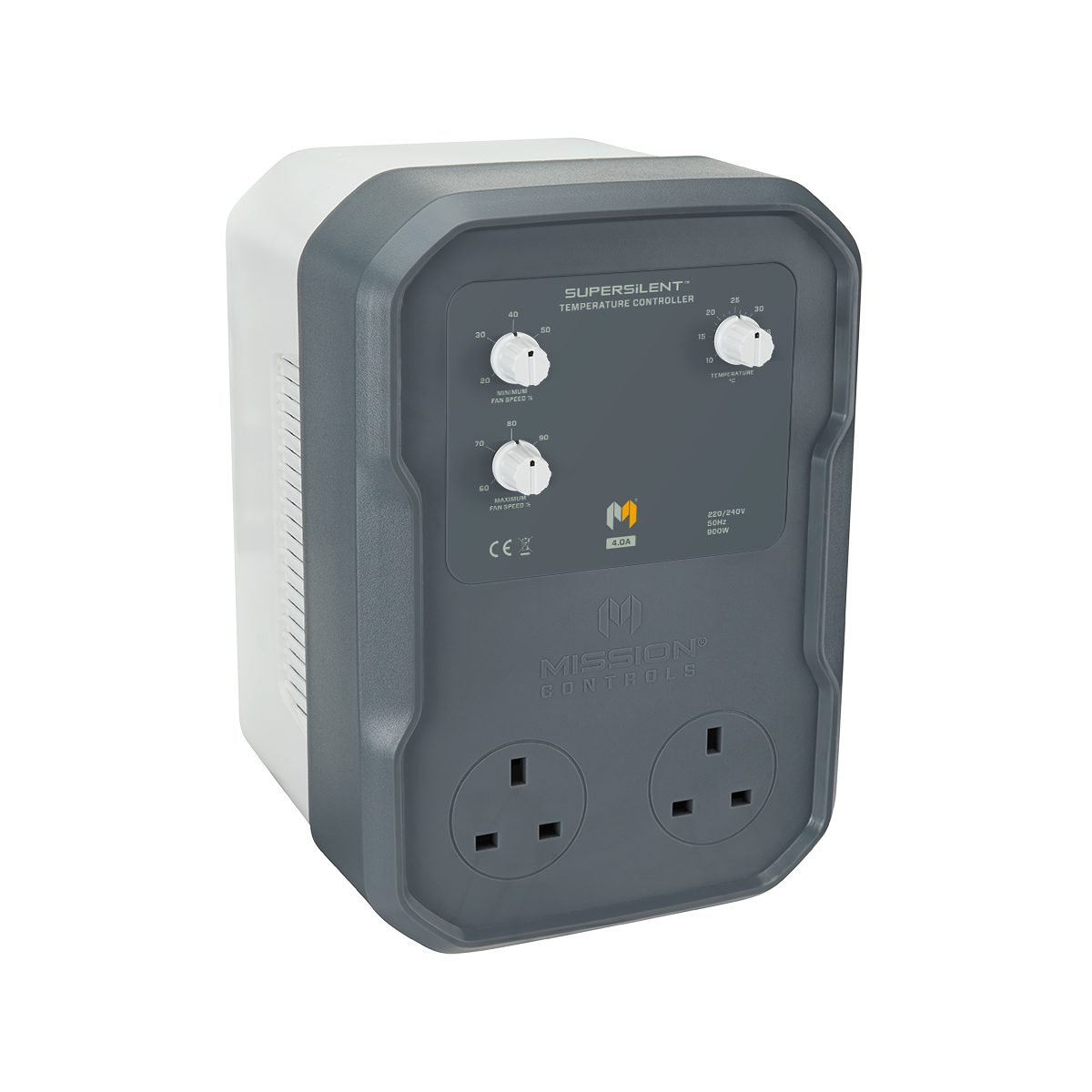
Temperature Controller
Assuming your filter is new, and of good quality, this is most likely because more air is being drawn into the room than is being extracted, causing positive air pressure that is forcing air out of gaps in the room. Check Minimum and Maximum Fan Speed settings are correct, we recommend the lowest minimum and highest maximum, or check our support blogs for help with extractors and achieving negative air pressure.
No, as long as the total amps for the controller is not exceeded you can distribute the load as you choose. For example, a 4 Amp controller could have 2 amps per socket, or, all 4 amps on one socket providing nothing is added to the second socket.
When you first install your controller, it needs to calibrate itself to find the correct fan speed. During this calibration sequence, you will hear the fans speed changing up and down. Calibration will last approximately 5 minutes before the fans find the correct speed. Calibration will not happen again unless controller is powered off and restarted.
Assuming incoming air temperature is lower than the temperature inside the room, it means your fans are too small for the amount of heat being generated by your lighting system, or they are being restricted by duct work. Try temporarily disconnecting the filter and/or reducing duct length and bends. If this solves the problem, consider using less light or larger fans before reinstating duct work. Check our support blogs for help with choosing the right size fans.
This means the Night-Pulse™ feature is activated. To deactivate, turn controller off at mains, cover the Night-Pulse™ sensor with cap then switch controller back o
We do not recommend disconnecting the intake fan. If disconnected, airflow will be compromised and room will lose negative pressure. A better strategy is to:
1. Check that the Minimum Fan Speed is set to its lowest setting.
2. Defuse incoming air using Cool-Sox, or similar product.
3. Use a dedicated heater with thermostat during the night time.
4. Draw incoming air into room from a warmer location, rather than outdoors.




